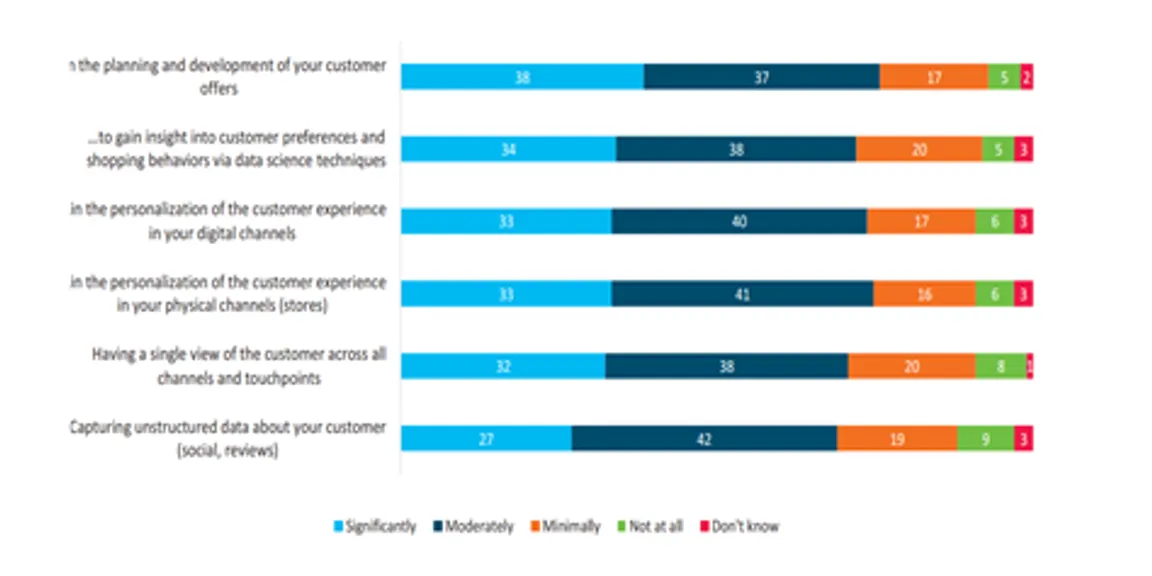

What’s keeping retail CxOs up at night!
When it comes to retail, the business environment is as dynamic as it gets. Countless product categories, a diverse and demanding customer base, fierce competition and wafer thin margins form just a small subset of the challenges faced by Retail CxOs on a daily basis. Smart executives are increasingly looking at data sciences for answers to help them outperform competitors in this disruptive landscape. Retail analytics has consistently shown stupendous potential to emerge as a key strategic differentiation across organizations of all sizes. To understand how analytics can transform the way retail operates, let's first analyze the key challenges that retail CxOs are seeking answers to.
Challenge #1 - Shifting consumer shopping behavior
Operating in a customer-centric way is easier said than done, especially, in the retail industry. According to the 19th Annual Global CEO survey by PwC (2016), on-line shopping has been the single biggest disruptor to hit the retail sector. It has brought about drastic changes in the shopping habits of consumers including the way they research about products, compare prices, respond to offers and make payments. Dwindling footfalls have forced brick-and-mortar retailers to redesign the in-store shopping experience to be in sync with customer shopping behaviors and also foray into e-commerce to provide their consumers a seamless omnichannel experience. Following is a graphic listing the top areas of focus in the context of understanding consumer shopping behavior, and the levels at which organizations are leveraging customer analytics for them.
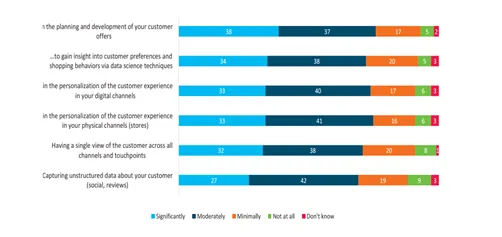
Retail Analytics is helping CxOs understand their customer – online as well as in-store – and orchestrate personalized experiences that could never have been envisaged without leveraging data sciences. As seen in the below graphic, ‘Big data availability and analytics’ is the second most sought after digital capability out-of-store, next only to Mobile apps. With analytics, retailers are leveraging structured customer data extracted from websites, mobile apps, billing systems and supply chain partners as well as unstructured data available across social media to have their fingers on the pulse of changing shopping trends.
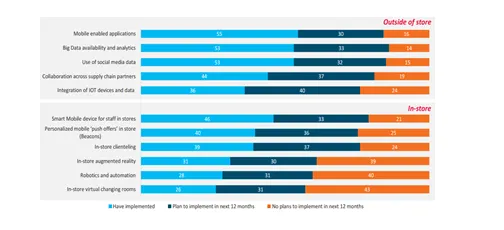
Challenge #2 – Changing investment priorities
A natural outcome of the increased emphasis on understanding customer behavior is the need to invest in the digital transformation of retail organizations. Digital transformation includes putting in place tools, to capture the ever-increasing omnipresent customer data as well as to leverage this data using advanced statistical techniques to generate actionable insights. Along with Big Data - IOT, robotics and augmented reality are some of the digital capabilities retail CxOs are focusing on. According to the CEO Viewpoint 2017 survey by JDA Software Group Inc., retailers who have a well-defined digital transformation strategy already being implemented have a higher proportion of online revenues and are also experiencing higher same-store sales growth, although, it is interesting to note that less than half the retailers surveyed actually had a digital transformation strategy in place.

When it comes to comparing the various technologies that are potential investments, Retail Analyticsis the clear winner that generates thegreatest return for stakeholder engagement as indicated by majority Retail and CPG CEOs.
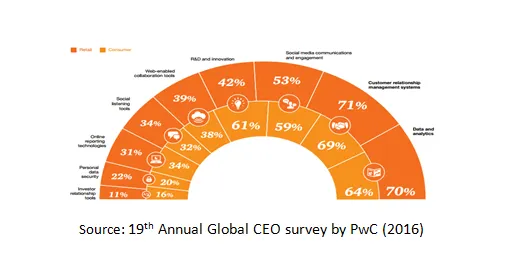
Challenge #3 – Omni-channel fulfillment versus profitability
With e-commerce taking in-store retailing head on in terms of volumes, delivery of orders takes centre-stage as a major cost item. Retail CxOs have to strike the right balance between highly customer-centric fulfillment options such as ‘same day delivery’ or ‘flexible delivery time slots’ and their associated labor and supply chain costs. As is evident from recent surveys, retailers are investing more into product collection methods such as ‘collect in-store’ and ‘return in-store’ to bring down escalating costs that dent profitability.

Another important cost component which is an outcome of thefocus on omnichannel fulfillment is the cost of returns. Although those with a profitable omnichannel operation are lesser affected by the cost of customer returns, a survey shows that 59 percent of retailers are still impacted by it to some degree.

Retail analyticshelps CxOs get real-time visibility of the stock levels and forecast stock movements to avoid stock-outs while at the same time optimize inventory to control costs. This ensures accurate on-time fulfillment of orders and supports the management vision of scaling up online. Without a keen eye on supply chain issues for maximizing profitability in e-commerce, it is next to impossible to sustain operations. Below is a graphic listing supply chain issues that impact profitability the most, as indicated by Retail CEOs.
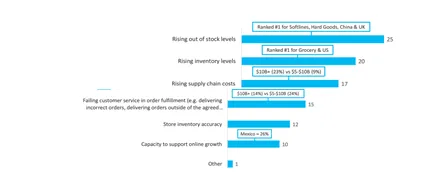
Challenge #4 – Measuring Innovation and Risk
Measuring the impact of innovation and the level of risk in a quantifiable manner is much more challenging when compared to measuring plain vanilla financial or transactional performance indicators. So is that in the case of other non-financial indicators such as brand parameters, employee practices, and environmental impact. Retail CxOs struggle to quantify these important indicators, which in turn, leads to lack of communication to stakeholders about them.Following are the areas that CxOs should be doing more to measure/communicate impact and value for wider stakeholders.
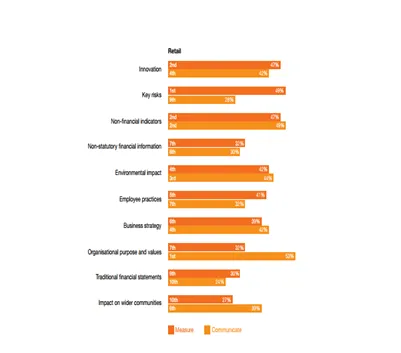
Consider a simple example of a retail store chain planning to implement an innovative discount offer for a newly launched product. It is extremely important to quantify beforehand the tangible impact that the promotion may have on the sales and margins as well as compare these forecasts to the actual realization values. At the same time, it is also imperative to quantify the risk of stockouts or delayed order fulfillments due to underestimation of promotion performance. Retail Analytics helps CxOs stay on top of their game with predictive analytics that helps them take data-based decisions and eliminate the guesswork in estimating risk. Also, it helps to measure theimpact of innovations and communicating them to stakeholders through easy to interpret visualizations.
To conclude, Retail Analytics can provide accurate answers to some of the most complex challenges facing Retail CxOs today. Data science solutions available in the market such as ‘Manthan retail analytics’provide analytics-ranging across the spectrum of retail business processes such as merchandising analytics, supply chain analytics, e-commerce analytics, customer analytics and more. Some companies with deep domain expertise such as UNLOCK INSIGHTS also provide innovative outsourcing models including the contractual hiring of specialized data scientists to control upfront costs and drive maximum ROI in minimum time. It is recommended to partner with an analytics provider to test the waters before starting to building in-house analytics capabilities.

